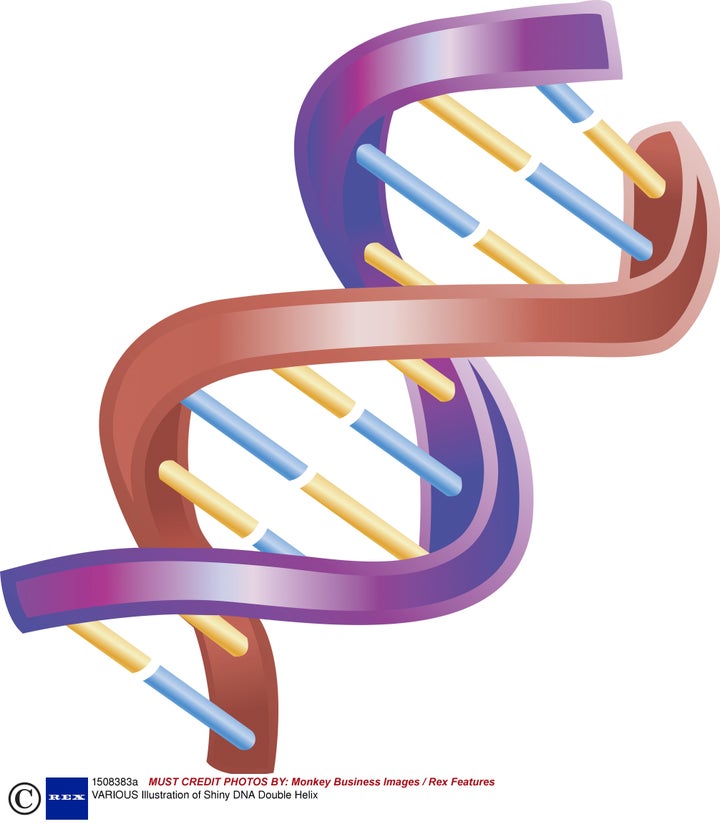
Two postings back, I promised a commenter called Sierkovitz that I would discuss epigenetics. This is an important subject with major implications for understanding natural genetic engineering in evolution. So here is the first of at least three related blogs.
"Epigenetics" literally means "over or above genetics." It refers to hereditary changes in genome expression that do not involve alteration of DNA sequences.
Contemporary ideas about epigenetics have two independent historical sources that have subsequently merged in a remarkably satisfying way. The first source was theorizing about cell differentiation and morphogenesis by Conrad "Hal" Waddington, one of the most imaginative and penetrating mid-20th-century geneticists. Waddington realized that a heritable control process was necessary for cells with the same genome to form tissues containing different kinds of cells. In 1942 he called this the "epigenotype," meaning a higher-level regime placed over the genome during development so that different sequences could be expressed in distinct cell types.
The second source of epigenetic ideas came from observations on DNA packaging in the cell. The DNA in our cells would be over 6 feet in length if stretched out, but the nucleus is only about 1 ten-thousandth of an inch across. Clearly, our genomes are densely compacted to fit in such a small volume. Moreover, the packing has to be highly organized so that replication, transcription, chromosome movements, and all other genome functions proceed smoothly.
The historical reality is that cytogeneticists (literally, cell geneticists) had been observing DNA compaction since the 19th century through their microscopes. They described various forms of "chromatin" (i.e., colored material) along the length of chromosomes. The prefix "chroma-" refers to the coloration of chromosomes by various stains used to make them visible. Normal staining was called "euchromatin" (i.e., "true" chromatin), and darker staining was called "heterochromatin" (i.e., "different" chromatin).
Using distinguishable chromatin regions in her maize stocks, the pioneer cytogeneticist Barbara McClintock and her student Harriet Creighton were the first to demonstrate that chromosome physical structure corresponds to a genetic linkage map. From studying what was initially considered a marginal phenomenon in genetics, "position effect variegation," geneticists came to understand that differences between eu- and heterochromatin had a profound impact on genome expression.
Today, we understand that the molecular basis of DNA compaction into chromatin provides the epigenetic control system that Waddington first postulated in the 1940s. The way the chromatin forms regulates how accessible the chromosomal DNA is to proteins and RNA molecules that carry out replication, transcription, repair, recombination, natural genetic engineering, and attachment of protein motors and filaments for moving the genome within the nucleus.
During cell differentiation and development, distinct cell types "index" different regions of the genome into expressed and unexpressed chromatin domains. Thus, the set of encoded functions can be "canalised" (Waddington's term, with British spelling) into those appropriate for each specialized cell type. There are special signals and processes that punctuate the genome for formation into chromatin domains that may span a significant number of separate coding regions.
DNA in chromatin is modified chemically and compacted in two ways:
- By having methyl (-CH) groups added to or removed from one of the bases (DNA methylation and demethylation), and
Cells control chromatin structure exquisitely. They have a chromatin formatting and reformatting system that is a wonder of molecular signaling and control. There are arrays of specialized "chromatin-formatting" enzymes that add or remove methyl groups from the DNA and other enzymes that add or remove various chemical groups from specific amino acids in the "tails" of the histones that peak out from the nucleosomes. These covalent (stable) chemical modifications of the DNA and the histones constitute an intricate code that the cell can read to determine the accessibility status of the underlying DNA, independently of its sequence.
Chromatin structures can be inherited or changed during the life cycle and across generations. This is most easily appreciated from the phenomenon known as "imprinting." The expression of many genetic loci does not depend on the DNA sequence alone; it also depends on which parent contributed it to your genome. When sperm and egg cells form in male and female gonads, particular regions of the genome are epigenetically imprinted into special chromatin domains so that they will either be expressed or not post-fertilization, during embryonic development and after birth. Some loci are only expressed from the father, and some only from the mother. The imprintings are stably inherited through all the cell generations it takes to make an individual.
We are beginning to discover how many epigenetic configurations are inherited across generations. This is the kind of inheritance that can have a profound influence on evolution, because it can be selected and expand in a population. Some very stable multigeneration genome changes are, in fact, "epimutations" that do not involve any DNA sequence alteration, only chromatin reformatting.
Other transgenerational changes are reported to be induced by a wide range of environmental factors, such as environmental stress, endocrine disruptor chemicals, infection, and even maternal grooming. The ability of environmental factors to cause inherited epigenetic modifications makes this form of genome coding particularly attractive to neo-Lamarckists.
There is a great deal more to say about epigenetic inheritance. In the next couple of blogs, I will discuss epigenetic memory and targeting, overturning a six-decade mainstay of evolutionary dogma, and the connection between epigenetic changes and natural genetic engineering of DNA sequence organization. Stay tuned for some eye-opening research.